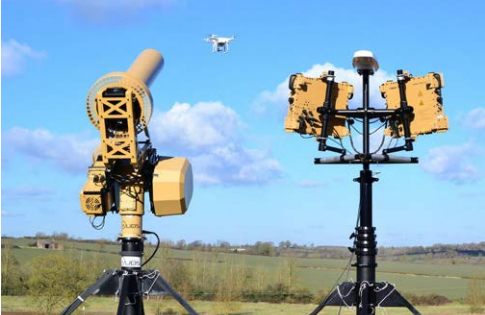FAA Tests Drone Zappers at Denver Int’l Airport

DENVER—Federal officials field tested drone zappers at Denver International Airport last week. The Federal Aviation Administration, along with a number of participants in its drone-detection Pathfinder Initiative, tried out early “counter unmanned aerial systems” at DIA, according published sources, including The Las Vegas Journal Review and the State of Nevada.
“We flew over a half dozen fixed-wing and multi-rotor drones during the ground detection system testing in Denver,” said Chris Walach, director of the Nevada UAS Test Site, in a press release from the Nevada Governor’s Office of Economic Development. The Nevada site is one of six FAA-designated drone test sites in the United States.
The goal of the Denver tests was to punk the drone-detection systems using multiple drones flying during a variety of weather conditions both day and night. Current airport radar systems are not designed to ferret out the unmanned aircraft defined by FAA drone rules as those weighing 55 pounds or less.
Drone flight is restricted around airports because a collision with a larger manned aircraft may result in damage such as engine failure, this gizmodo article says. (Also see this article from The Daily Mail in which the chief executive of the U.K. Flight Safety Committee warns of the dangers of drone flight near airports, and this one from IEEE Spectrum that says the dangers may be overstated.)
The details and results of the tests were not immediately available, but Walach told the Journal Review that an effective detection system will have to be able to identify a drone’s frequency as well as its audio/visual system.
The FAA recruited three private sector partners last June to research and develop drone-detection systems, including Gryphon Sensors LLS of Syracuse, N.Y., Sensofusion of New York (and Finland) and Liteye Systems Inc. of Centennial, Colo., representing three British firms. (See “FAA to Test Drone Zappers,” June 2, 2016) At least one, Liteye announced that its AUDS technology would be among those tested in Denver.
Liteye’s AUDS is described as a “second-generation counter UAV system that detects, tracks, identifies, and defeats unmanned [aerial] vehicles” using “radar, precision thermal and daylight cameras, advanced video tracking, and non-kinetic defeat capabilities,” according to the company.
Drone flight is restricted within five statute miles of an airport without prior permission from air traffic control. There are more than 5,000 public use airports in the United States, and the FAA became particularly concerned after reported sightings near airports increased rapidly after drones proliferated in the market. (See, “Drone Sightings: FAA Logs 583 Reports of UAVs Near Airports,” March 28, 2016.)
In its rules released in June, the FAA said it expected that “a number of small UAS operations may take place near an airport,” and that there may be “instances where a small unmanned aircraft unexpectedly ends up flying near an airport due to adverse conditions, such as unexpectedly strong winds that carry the aircraft toward the airport.”
To that end, Walach said the drone flight crews in Denver experienced wind gusts of more than 20 to 25 knots (23 to 29 mph) on Nov. 16. The flights were conducted “day and night through multi-aircraft operations under severe cold-weather and snow conditions,” he said.
The FAA and the Nevada Institute for Autonomous Systems, managers of the FAA-designated Nevada UAS Test Site, teamed together with Northern Plains UAS Test Site to conduct the tests in Denver. The Nevada Team included Nevada-based Eye in the Sky UAS, Colorado-based UASUSA, North Dakota-based ISight RPV Services, and the Nevada UAS Test Site flight team.
Learn more at The National Drone Show, Dec. 7-8, at the Walter E. Washington Convention Center in Washington, D.C.
Get the TV Tech Newsletter
The professional video industry's #1 source for news, trends and product and tech information. Sign up below.
